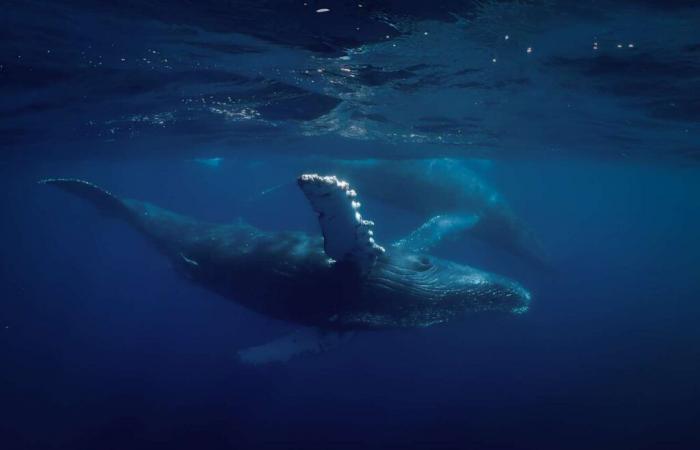A study published in February 2024 in the journal Conservation Genetics to me in lightlight a surprising phenomenon among North Atlantic blue whales. These colossi of the oceans, which can reach up to 34 meters in length, harbor in their heritage geneticgenetic significant traces ofADNADN coming from another species: the fin whalefin whale. This unexpected discovery challenges our understanding of reproduction in these marine mammals and raises questions about their future.
An unexpected genetic mix
The team of researchers, led by Mark Engstrom of the University of Toronto, analyzed the genomes of 31 blue whales from the North Atlantic. Their meticulous work, comparable to assembling a gigantic puzzle, revealed a surprising reality: each individual studied had traces of fin whale DNA in its genomegenome.
On average, 3.5% of the genetic heritage of these blue whales comes from fin whales. This percentage, although appearing low, is actually significant and unexpected. It testifies to a phenomenon ofintrogressionintrogressionthat is to say the transfer of GenoaGenoa from one species to another by hybridizationhybridization and backcrossing.
This genetic mix raises fascinating questions:
- How do these two species, despite their differences in size, manage to hybridize?
- What are the implications of this hybridization for the conservation of blue whales?
- Is this phenomenon unique to the North Atlantic or does it exist elsewhere?
The “flues”: fertile hybrids
Scientists already knew of the existence of hybrids between blue whales and fin whales, nicknamed “flues”. These exceptional creatures generally combine the imposing size of blue whales with certain characteristics physiquesphysiques fin whales, such as their specific coloring.
For a long time, these hybrids were thought to be sterile, like many other hybrids in the animal kingdom. However, this new study proves the opposite. Not only can these “flues” breed, but they apparently do so regularly with “pure” blue whales, giving birth to offspring carrying genes from both species.
This backcrossing phenomenon explains the presence of fin whale DNA in the blue whale population. It raises fascinating questions about the evolution and adaptability of these species in the face of environmental change.
| Characteristic | Blue whale | Fin whale | “flues” (hybrid) |
| Maximum length | 34 meters | 27 meters | Between the two |
| Average weight | 170 tons | 85 tons | Variable |
| Coloration | Blue-gray | Dark gray | Mixture of the two |
Conservation implications
This discovery raises crucial questions for the conservation of blue whales, classified as an endangered species by the International Union for Conservation of Nature (IUCN). If introgression does not seem to have immediate negative effects on individuals, its long-term consequences remain uncertain.
Mark Engstrom expresses a legitimate concern: could the continuation of this phenomenon gradually dilute the genetic heritage specific to blue whales? Could this loss of genetic diversity reduce their capacity to adapt to environmental challenges, notably climate changeclimate change ?
Paradoxically, the study also revealed good news: North Atlantic blue whales have fewer inbreedinginbreeding than expected. The researchers observed significant gene flow between populations in the western and eastern Atlantic, probably due to the movements of whales following the North Atlantic Current to feed. This connectivity reinforces the overall genetic diversity of the species, a key factor for its resilienceresilience.
A hope for the future
Despite the questions raised by this study, researchers remain optimistic. The ability of blue whales to maintain genetic diversity despite their low numbers is encouraging. Mark Engstrom says: “ This gives me hope that, with continued conservation efforts, Atlantic populations can recover ».
This discovery opens new perspectives for research in marine biology and conservation. She highlights the importance of:
- continue in-depth genetic studies on cetacean populations;
- monitor the evolution of the long-term introgression phenomenon;
- adapt conservation strategies taking into account this new data;
- strengthen the protection of marine habitats to promote the recovery of populations.
The hidden DNA of blue whales reminds us of the fascinating complexity of life and the crucial importance of preserving marine biodiversity. Each discovery in this area is a further step towards a better understanding and protection of these giants of the seas, majestic witnesses of evolution and guardians of the oceans.






